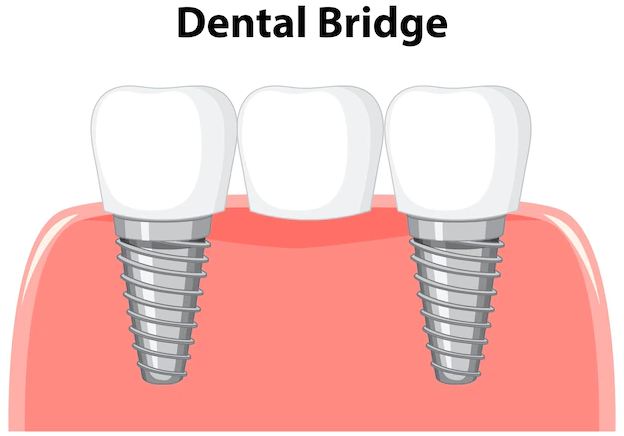How Dental Crowns and Bridges Change Your Smile?
Dental crowns and bridges are common processes performed by specialist dentists. Their general role is restoring the tooth or teeth to their chewing function. Crowns and bridges are of several types, and since bridges consist of crowns, let us tell you all about both crowns and bridges.
What Is Crown?
The Crown is the cap; it is a restoration that covers the whole tooth. The crown will be countered and sized to the natural tooth by replacing the outer enamel layer with the latest material. After that, they will contact the opposite tooth normally. With this, patients can chew the food properly. Generally, the crown should be the normal tooth regarding function. Depending on the chosen crown material, it will look perfect on the natural tooth.
Dentists will fabricate the crown from several materials, such as plastic, and other metals, such as porcelain, or you can opt for a combination of both. The material type has different roles and purposes of offering pros and cons.
What Is A Bridge?
The bridge is the partial denture. It will be glued to the teeth, replace some of them, and use the fake teeth in the place of unavailable teeth. You can opt for the bridge to replace one or more teeth; when you have functioning teeth, they will be available on both sides of the missing teeth.
The bridge will cover the retainers exactly as the crown covers the single tooth. The difference is that the bridge will be connected to the pontic in the missing space of the tooth.
If you have one missing tooth, you will need the bridge of the three units, one unit would be for the adjacent retainer tooth, and the last would be for the pontic. Bridges are also made of the same material as crowns. When your permanent bridge is made, the dentist will remove the temporary crown, and the new one will be cemented to your teeth.
Benefits Of Crowns
Temporary crowns are made from plastic, whereas permanent crowns are made from the dental lab. They are inexpensive and only last for a short time, and they cannot restore the full metal crown. The benefits of crowns are as follows:
• The high success rate in the long run.
• Need the least amount of tooth structure.
• Metal appearance.
• High cost due to gold.
• Decay-resistance.
• Provides a natural look.
• Strong
• Show the dark gumline shading for the visible metal.
Benefits Of Bridges
The bridge will be quick to replace 1-2 missing teeth. You will not have to go through the surgery, which the dental insurance usually pays as the covered benefit. For the bridge, you will have to schedule your appointment two times. In the first one, the two adjacent teeth will be prepared. The final bridge will be cemented and fitted to your teeth during the second and final visit.
Conclusion
While crowns and bridges can last long, they may become loose. The most vital thing to do to ensure the bridge’s and crown’s longevity is to follow good hygiene. The bridge will lose its support if the bone or teeth are in place after being damaged by the oral disease. You should strive to keep your teeth healthy by regularly brushing.





 |
|